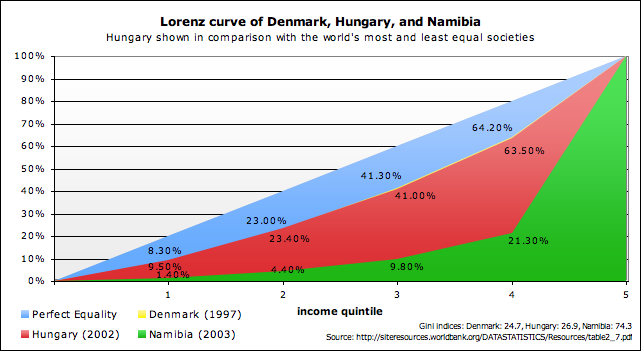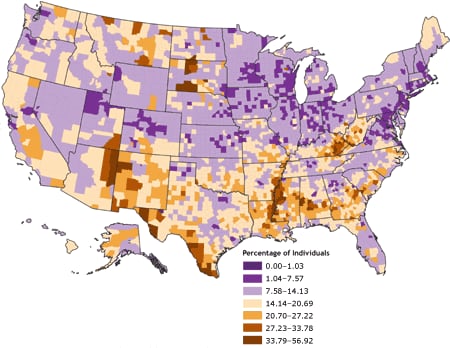A stem and leaf plot is similar to a histogram, however it is able to display more information, giving more detail about individual values and arranges the data by place values. Largest digits are the stem, smaller are the leaves. As you can see, this stem and leaf plot shows the GNP per capita of Western Africa. $890 being the most, $180 being the least.
Thursday, July 7, 2011
49. Box Plot
A box plot summarizes median, upper and lower quartiles, and minimum and maximum data values, drawn either vertically or horizontally. Simply, the line in the middle is the median and the box contains 50% of the data. This one is being used to show many different flights and delay of distribution by minutes.
48. Histogram
Histograms are bar graphs which show frequency distribution, where the variable classes have been divided are shown proportionally by the width of the bar, and the heights of the bars are proportional to class frequencies. Categories are listed horizontally and the number of occurances are listed vertically. This particular historgram was made taken information from the 2000 U.S. Census showing travel times for working Americans.
47. Parallel Coordinate Graph
Parallel coordinate graphs use parallel coordinates to present statistics and are used to plot large multivariate sets of data. In the data plot, each variable is has its own "y" axis on the graph. This parallel coordinate graph plotted fast car acceleration, working with many dimensions.
46. Triangular Plot
A triangular plot depicts ratios of three variables in positions on an equilateral triangle. The three variables have to sum the constant. This is a triangular plot area on which soil textures are defined as proportions of sand, silt and clay.
45. Windrose
A wind rose is a tool used by meteorologists and geographers to give a succinct look at how direction and wind speed are usually distributed at a specific area, they're site specific. Each of the usual 36 spokes used gives information on the wind and speed. This windrose is of wind data taken from Maine.
44. Climograph
A climograph is a graph of the monthly precipitation and temperature for a certain area. A bar graph shows the precipitation and a line graph shows the temperature. You can see an example of this with the climograph of Moscow, Russia, displayed here.
43. Population Profile
The definition of a population profile is a chart showing the number of people as a function of their ages. This one shows the population in illions of less developed countries in 2000.
42. Scatterplot
A scatterplot is a type of diagram which uses coordinates to display the values of a set of data from two variables, which are represented on the horizontal and verticles axis. The scatterplot presented here displays data from 113 countries showing the viewer how rich various countries are versus how much their wealth is shared, focusing on the U.S.
Tuesday, July 5, 2011
41. Index Value Plot
An index value plot depicts relativity of values from an indexed value onto a line graph. This is an S&P 500 stock index showing the value that it has kept throughout the year.
40. Accumulative Line Graph
An accumulative line graph, or Lorenz curve, shows the proportionality of distribution, representing the probability of distribution and commonly used in analysis of inequality and economics. It usually presents income distribution, using percentages of incomes and households. This curve shows the income proportionality comparing three different countries of varying development: Denmark, Hungary, and Namibia.
39. Bilateral Graph
A bilateral graph depicts positive and negative values onto a single graph, often displayed as a bar graph, up and down from a zero line, but may also be displayed other ways. This bilateral graph shows annual revenues from various nations around the world in U.S. dollars (millions).
Friday, July 1, 2011
38. Nominal Area Choropleth Map
Nominal area choropleth maps present nominal details without necessarily having an order, usually with colors describing the quantitative data. This is a map which presents data of worldwide nominal GDP per capita.
37. Unstandardized Choropleth Map
Unstandardized choropleths maps reveal raw data and real numbers rather than percentages or some other form of standardization. This map has colors which represent the amount of orchard acres across the U.S.
36. Standardized Choropleth Map
Standardized choropleth maps show rates/ratios, which are standardized to allow for comparing distribution, normalizing for a specific area. So, this choropleth map shows percentages of individuals living in poverty in U.S. counties, not raw data.
35. Univariate Choropleth Map
Univariate choropleth maps present one set of variable data. This map shows the median household income in the U.S. for each state, where darker shades represent higher incomes.
34. Bivariate Choropleth Map
A bivariate choropleth map displays two variables on a single map by combining two different sets of symbols or colors. The map displayed here combines the population of young people under the age of 18, reds, and the rural population, blues, giving a leged which shows what their combinations mean.
33. Unclassed Choropleth Map
Unclassed choropleth maps represent values by proportional degrees of darkness, so that map doesn't have to classify the data. Such as with this map showing proportion of children 0-15 using a continuous grayscale, there's no definite set of figures given.
32. Classed Choropleth Map
Classification of choropleth maps were orginally used to minimize colors used for representing data as well as reducing subjectivity of data representation when printing maps. Three methods of classification include: classification into equal intervals, equal frequencies of objects in the classes, and statistically optimal classification. This classed choropleth map gives six different colors which are intervals representing state population figures.
31. Range Graded Proportional Circle Map
A range graded proportional circle map uses a proortional circle map model but with circles that relate to ranges of data, where each varient of size represents a specific range of data on a scale. This map shows the population of countries in Europe using circle ranges.
Subscribe to:
Posts (Atom)

















